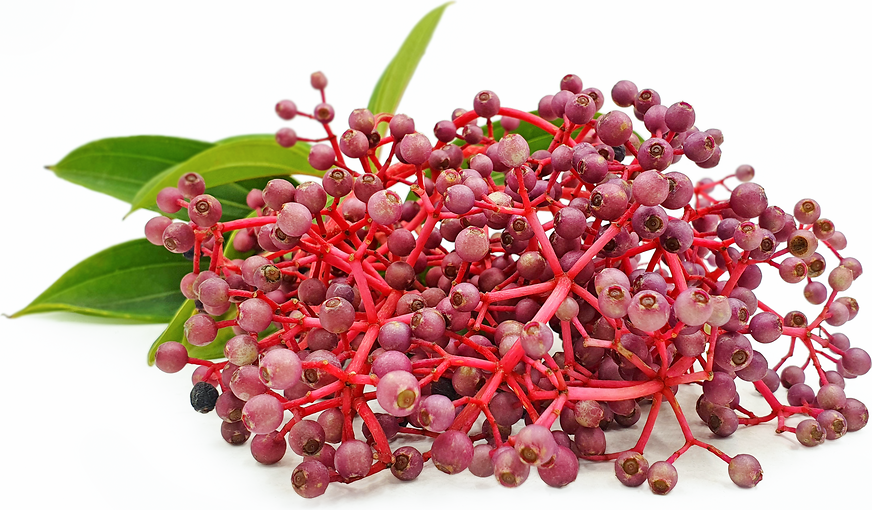


Parijoto Fruit
Estimated Inventory, lb : 0
Description/Taste
Parijoto fruit is small in size and round to oval in shape, growing in large clusters on angular, thick, and fibrous stems. The skin of the fruit is taut, smooth, and ripens from pink to a vibrant red-purple when ripe and the stems are also bright red-pink. In addition to the fruits, the leaves are lanceolate in shape, averaging fifteen centimeters in diameter, and are dark green with a leathery texture and prominent veining. Parijoto fruits are crunchy, soft, and slightly acidic with a sweet and sour, fruity flavor.
Seasons/Availability
Parijoto fruit is available in the fall.
Current Facts
Parijoto fruit, botanically classified as Medinilla speciosa, are tiny fruits that grow on an evergreen shrub that can reach up to one meter in height and belongs to the Melastomataceae family. Also known as Showy Asian grapes, Parijoto plants are found in Southeast Asia, growing throughout dense forests in mountainous regions with slightly cooler climates. There are many different varieties of Parijoto, and these shrubs are highly favored as ornamental plants grown for their brightly colored fruits in home gardens.
Nutritional Value
Parijoto fruits contain tannins, glycosides, saponins, and flavonoids, which contribute to the fruit’s high anti-inflammatory properties.
Applications
Parijoto fruit is predominately consumed raw and can be eaten fresh, out-of-hand, sprinkled over desserts, tossed into fruit and green salads, or muddled and mixed into fruit drinks and cocktails. When young, the fruit is also sometimes coated in vinegar to add flavor. In addition to raw preparations, Parijoto fruit can be cooked and processed into jams and syrups. The leaves of some varieties are also edible and add a sour flavor into stir-fries, curries, soups, and salads. Parijoto fruits should be consumed immediately after harvest for best quality and flavor, and will only keep 1-2 days when stored in the refrigerator.
Ethnic/Cultural Info
In Java, Indonesia, Parijoto fruit is believed to be very healing and is used medicinally for its anti-inflammatory and anti-bacterial properties as a remedy for sores and diarrhea. The fruit is traditionally boiled and consumed as a drink and is sometimes mixed with turmeric or ginger for added nutritional benefits. Parijoto fruit is also the subject of mythology in a village near Mount Muria, a dormant volcano on Java. Locals believe eating the medicinal fruit will allow women to become fertile, and if consumed while pregnant, the children will be more beautiful when born. This myth stems from the story of Sunan Muria, a man who was credited with spreading Islam throughout Southeast Asia, and his wife who professed to consuming the fruit and giving birth to a beautiful baby with clear skin.
Geography/History
Parijoto fruit is native to regions across Asia and Southeast Asia and has been growing wild since ancient times. Today the plant is widely cultivated for ornamental use and for its brightly colored fruits. Parijoto fruit can be found at local markets in Java, Borneo, the Philippines, Sumatra, and throughout the Malay Peninsula.




